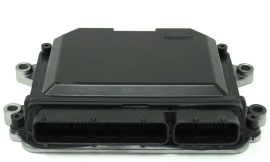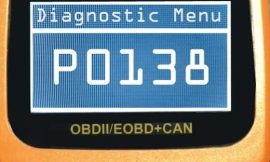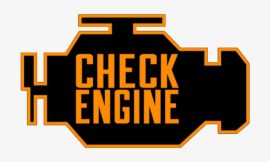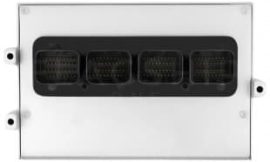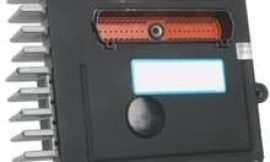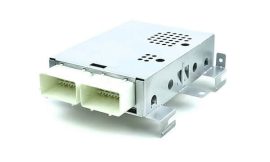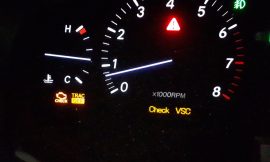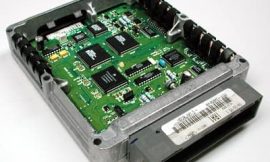Last updated on December 26th, 2023 at 01:02 pm
Diagnostic Trouble Code (DTC) P0113 primarily indicates an issue in the Intake Air Temperature (IAT) sensor circuit, where the input is reporting excessively high readings. This error code sends a crucial warning that there might be an open circuit problem, or the sensor is faulty and is unable to relay ambient air temperature readings accurately to the Engine Control Unit (ECU). The importance of addressing this issue promptly cannot be overemphasized, as it can lead to a myriad of undesirable outcomes, such as higher fuel consumption, inhibited engine performance, or increased emission levels. Implementing timely fixes not only ensures optimal vehicle performance but also prevents potential long-term damage. In the forthcoming sections, we’ll delve deeper into common symptoms, causes, and proven fixes for DTC P0113.
What is DTC P0113?
DTC P0113, or Diagnostic Trouble Code P0113, is a specific error code that relates to the Intake Air Temperature (IAT) sensor. Technically, this code signifies that the IAT sensor circuit is reporting excessively high readings, suggesting a potential open circuit problem or a faulty sensor. The IAT sensor, a critical component of the vehicle’s management system, measures the temperature of the air entering the engine and sends this information to the Engine Control Unit (ECU). The ECU uses this data to calculate the correct fuel-air mixture for combustion, facilitating optimal engine performance.
When the IAT sensor malfunctions, indicated by the DTC P0113 code, it cannot relay accurate temperature readings. This misinformation can lead the ECU to calculate an inadequate fuel-air mixture, impacting the vehicle’s performance considerably. The vehicle might exhibit symptoms like decreased fuel efficiency, irregular engine performance, higher emission levels, or even engine stalling in some cases. Hence, identifying and rectifying a DTC P0113 error is paramount for maintaining a vehicle’s efficient operation and longevity.
Common Symptoms of DTC P0113
When DTC P0113 is present, you may notice several telltale signs indicating a malfunction in the Intake Air Temperature (IAT) sensor circuit. Here are the most common symptoms and their explanation in relation to the trouble code:
- Engine Misfires: The engine may experience periodic misfires as the ECU receives incorrect temperature readings, leading to an improper fuel-air mixture. Misfires occur when the engine fails to fire on all cylinders, resulting in inconsistent power production and a noticeable jerking motion.
- Poor Fuel Economy: Since the ECU uses IAT sensor readings to adjust fuel mixture, incorrect readings can cause an overly rich fuel mixture, leading to increased fuel consumption. Consequently, you might find your vehicle covering fewer miles per gallon than usual.
- Trouble Starting the Engine: A faulty IAT sensor can cause starting problems, particularly in cold conditions. This occurs because the sensor inaccurately reports a high intake air temperature, causing the ECU to lean the fuel mixture, making it difficult for the engine to start in the cold.
- Rough Idling or Stalling: If the IAT is reporting excessively high temperatures, the ECU will lean the fuel mixture to compensate, possibly causing the engine to idle roughly or even stall when the vehicle is at rest.
- Check Engine Light (CEL) On: The most apparent symptom is the illumination of the Check Engine Light on your dashboard. This is your vehicle’s way of telling you that the ECU has detected an error — in this case, the P0113 code.
Potential Causes of DTC P0113
Understanding the causes of error code DTC P0113 can help in its timely diagnosis and rectification, thus ensuring the smooth functioning of your vehicle. Here are some potential causes:
- Faulty Intake Air Temperature (IAT) Sensor: The most common cause of DTC P0113 is a faulty IAT sensor. If the sensor is damaged or malfunctioning, it can’t relay accurate temperature readings to the ECU, leading to miscalculations in the fuel-air mixture and triggering the error code.
- Wiring or Connector Issues: Damaged wiring, poor electrical connections, or corroded connectors in the IAT sensor circuit can also cause this issue. Such problems can interrupt the signal transmission between the IAT and ECU, resulting in overestimated temperature readings and subsequent DTC P0113 code generation.
- ECU Problems: Though less common, issues with the ECU itself can lead to a DTC P0113. If the ECU misinterprets the signals from a properly functioning IAT sensor, it might erroneously trigger the error code.
- Air Leaks in the Intake System: Air leaks can result in inaccurate measurements of intake air temperature. If the leak is substantial, the additional air can cause the IAT sensor to report higher temperatures, leading to the generation of the P0113 code.
- Shorted Sensor Circuit: If the sensor circuit shorts to the power, the system will interpret it as an excessively high input, leading to the error code.
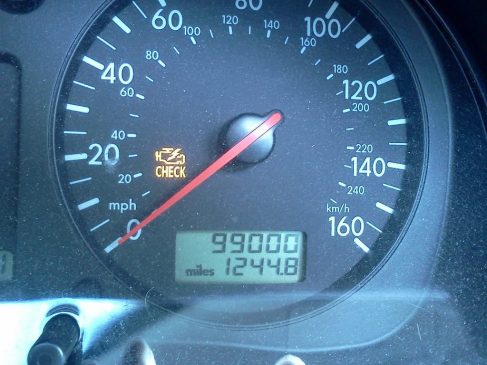
Diagnosing DTC P0113: A Step-by-step Guide
Diagnosing error code DTC P0113 involves a meticulous step-by-step process to identify the root of the problem. In this section, we will walk you through the diagnostic sequence to pinpoint the cause and implement the necessary fixes.
- Preliminary Inspection: Begin with a basic visual inspection of the Intake Air Temperature (IAT) sensor and its associated wiring. Look for obvious issues like physical damage, disconnected plugs, or corroded connectors.
- Use an OBD-II Scanner: Connect an On-Board Diagnostic II (OBD-II) scanner to your vehicle’s diagnostic link connector (DLC). This tool will read and interpret DTCs from the vehicle’s Engine Control Unit (ECU). If DTC P0113 is present, the scanner will provide a detailed error report, which can aid in your diagnostic process.
- Check the IAT Sensor: If the OBD-II scanner confirms the presence of DTC P0113, proceed to test the IAT sensor’s resistance using a digital multimeter. The resistance should vary with the temperature; a constant reading, regardless of temperature, indicates a faulty IAT sensor.
- Inspect Wiring and Connectors: Examine the wiring and connectors between the IAT sensor and the ECU. Use a multimeter to test for continuity. Any damaged wiring or loose connectors can disrupt signal transmission, leading to skewed temperature readings.
- Check for Air Leaks: Inspect the intake system for possible air leaks. An easy way to do this is to spray carb cleaner around the intake while the engine is running. If the engine speed changes, it indicates a leak.
- ECU Testing: If all the above checks do not reveal the problem, the issue might lie with the ECU itself. This requires professional diagnosis and is typically performed at service centers as it involves complex equipment and expertise.
Preventative Measures: Tips on Avoiding DTC P0113 in the Future
Preventing the occurrence of DTC P0113 involves adopting a proactive approach to your vehicle’s maintenance and care. Here are some routine tips to help you keep the dreaded P0113 at bay:
- Regular Inspection of IAT Sensor: Conduct periodic checks of the Intake Air Temperature (IAT) sensor for any visible damage or wear. Regular cleaning can also help prevent the accumulation of dust or debris that could hamper its functionality.
- Monitor Wiring and Connectors: Keeping a close eye on the wiring and connectors associated with the IAT sensor circuit helps detect any early signs of damage or corrosion. Prompt replacements or repairs of damaged components reduce the chances of DTC P0113 occurrence.
- Check for Air Leaks: Regularly inspect the intake system for potential air leaks. Remember, unchecked leaks can lead to inaccurate temperature measurements and trigger the error code.
- ECU Care: The Engine Control Unit (ECU) is the vehicle’s brain, and any malfunction can lead to various error codes, including P0113. Regular software updates and professional ECU checks can help maintain its optimum performance.
- Routine Vehicle Maintenance: Lastly, a well-maintained vehicle is less likely to run into issues. Regular servicing ensures that all components are in good working order, reducing the chances of encountering DTC P0113.
In conclusion, the occurrence of Diagnostic Trouble Code (DTC) P0113 can be attributed to a range of causes, including a faulty Intake Air Temperature (IAT) sensor, issues with the wiring or connectors in the IAT sensor circuit, problems with the Engine Control Unit (ECU), air leaks in the intake system, or a shorted sensor circuit. Implementing a thorough, systematic diagnostic process is crucial in accurately identifying the root cause and rectifying the issue.
Regular maintenance and inspection of your vehicle’s components, especially the IAT sensor, wiring, connectors, and the ECU, can help prevent the onset of DTC P0113. Furthermore, early detection and correction of air leaks can avoid skewed temperature readings and subsequent error generation. Ensuring the optimum performance of your vehicle’s ECU through regular updates and checks is vital. Addressing DTC P0113 in a timely manner is of utmost importance to maintain the health and efficiency of your vehicle, thereby ensuring a smooth and safe driving experience at all times.
Possible causes of running too rich:
- Dirty Air Filters
- Failing IAT sensors
- Worn out oxygen sensors
- A faulty PCM ( Powertrain Control Modules )
- Faulty Engine Coolant Sensor ( ECT)
- Bad Mass Airflow Sensor
- A circuit high input
Possible Causes of a car running too Lean:
- A faulty Pump Regulator
- Low Fuel
- Worn out IAT sensors
- EGR valve stuck in the open position
- Vacuum Leak
- Check engine light
- A circuit high input
- Misfires
An engine misfire can be the cause of many factors such as the spark plugs (ignition part), The EGR valve ( Fuel) ,vacuum lines, timing belt ( mechanical ). Since this is about the code P0113 trouble code we should be checking the spark plugs for any foul play. ( check the above list )
How to Fix the trouble code P0113 “Intake Air Temperature Sensor ” Trouble Code
Luckily this DTC is one those codes that be fixed easily without the need to go to an auto repair shop. The P0113 code DTC by going down this checklist
- Repair or replace the Intake Air Temperature connector short
- Replace or repair the vacuum lines
- Replace the O2 Sensor ( especially in dodge ram vehicles)
- Replace the Intake Air Temperature sensor with a new one ( Replace the IAT Sensors)
The Intake air temperature sensor is usually located at the bottom of the intake manifold. The intake Manifold is usually located right behind the throttle valve housing
A bad IAT sensor can lead but not limited to, being able to cold start, engine misfires, DTC P0113,your engine could be running too rich or too lean, Poor fuel economy
A high intake temp also known as the P0127 can be caused by having a defective IAT sensor / MAF sensor which is critical to calculate fuel delivery and ignition timing for the engine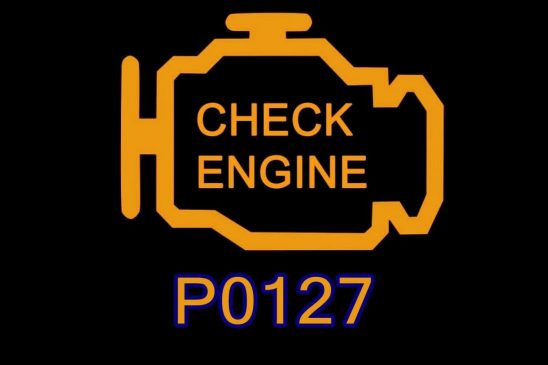
Fix the (IAT) air temperature sensor in 5 steps!
Step 1 – Find the faulty IAT sensor
Step 2 – Unplug the negative battery terminal ( YOU MUST DO THIS )
Step 3 – Unplug the faulty IAT’s electrical connector
Step 4 – Install the new Air temperature sensor replacement and it’s electrical connector
step 5 – Plug the negative terminal LAST!




